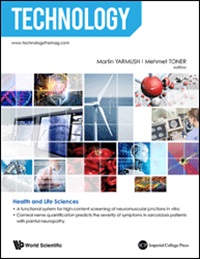Members Login

Channels
Special Offers & Promotions
Researchers Demonstrate Technological Breakthrough for Skin Regeneration
A team of researchers from the Beckman Institute for Advanced Science and Technology at the University of Illinois at Urbana-Champaign have demonstrated new multimodal optical microscopy technology that when coupled with advanced image co-registration algorithms, can account for soft-tissue deformations that may occur over the time-course of weeks and months.
 This technology can visualize cellular-level structural, functional, and biomechanical data and provide new insights into complex processes in living tissue, such as skin. This technology not only offers a new tool for basic science and pre-clinical investigations, but also offers the potential for human clinical investigations into the dynamics of skin regeneration and repair, the incorporation of engineered skin constructs, the effectiveness of new therapies for treating skin conditions such as non-healing diabetic ulcers, and for skin cosmesis applications.
This technology can visualize cellular-level structural, functional, and biomechanical data and provide new insights into complex processes in living tissue, such as skin. This technology not only offers a new tool for basic science and pre-clinical investigations, but also offers the potential for human clinical investigations into the dynamics of skin regeneration and repair, the incorporation of engineered skin constructs, the effectiveness of new therapies for treating skin conditions such as non-healing diabetic ulcers, and for skin cosmesis applications.
“This is a remarkable combination of optical hardware and software technology that provides not only beautiful and fascinating images of dynamic microscopic processes, but also opens the door for future clinical applications,” says Stephen Boppart, M.D., Ph.D., of the University of Illinois at Urbana-Champaign and senior author on this paper. “Mulitmodal imaging, and the ability to track cell and tissue dynamics over many months, will yield enormous volumes of data that will undoubtedly provide clues into many complex processes in skin.”
By spatially co-registering images from multiple modalities including optical coherence, two-photon excitation, second harmonic, and phase-variance microscopy, as well as co-registering these volumetric image datasets temporally at time-points that span several months, the investigators were able to visualize processes in wound healing and skin regeneration, as well as angiogenesis and tissue biomechanics including skin contraction.
“This is a nice example of where advances in imaging technology can enable both biological discovery as well as clinical applications,” says Ben Graf, Ph.D., the lead author on this paper.
The team from the Beckman Institute plans to now begin to translate these technologies into clinical applications, such as investigating differences in cell and tissue dynamics over short- and long-term time periods for skin regeneration in normal and diabetic pre-clinical models. It is well known that diabetic patients suffer from chronic non-healing skin ulcers that frequently results in lower limb amputations. New therapies, including the use of stem cells, have shown promise, but the mechanisms for repair and regeneration are poorly understood.
With the large volumes of spatial and temporal data generated from this system, the investigators are also exploring how they can exploit the co-registered data to discover new biomarkers and diagnostic parameters that may provide clues into fundamental disease mechanisms.
Additional co-authors of the TECHNOLGY paper are Marni D. Boppart, Sc.D., M. Carmen Valero, Ph.D., Michael De Lisio, Ph.D., Steven G. Adie, Ph.D., Marina Marjanovic, Ph.D., and Eric J. Chaney, all from the Beckman Institute for Advanced Science and Technology at the University of Illinois at Urbana-Champaign.
The report appears in the inaugural issue of the journal TECHNOLOGY.
This research was supported in part by grants from the National Science Foundation (CBET 08-52658 ARRA and CBET 10-33906, S.A.B.).
more about microscopy technology
About TECHNOLOGY
Fashioned as a high-impact, high-visibility, top-echelon publication, this new ground-breaking journal - TECHNOLOGY - will feature the development of cutting-edge new technologies in a broad array of emerging fields of science and engineering. The content will have an applied science and technological slant with a focus on both innovation and application to daily lives. It will cover diverse disciplines such as health and life science, energy and environment, advanced materials, technology-based manufacturing, information science and technology, and marine and transportations technologies.
About World Scientific Publishing Co.:
World Scientific Publishing is a leading independent publisher of books and journals for the scholarly, research and professional communities. The company publishes about 500 books annually and more than 120 journals in various fields. World Scientific collaborates with prestigious organisations like the Nobel Foundation, US National Academies Press, as well as its subsidiary, the Imperial College Press, amongst others, to bring high quality academic and professional content to researchers and academics worldwide.
Media Partners


